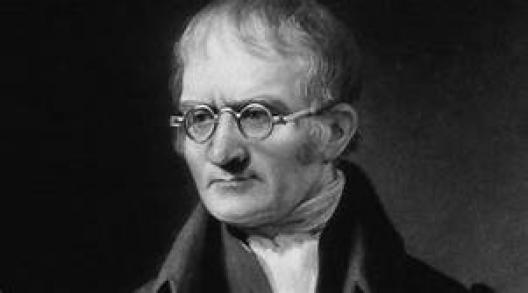
Lesson Plan
Grade Level:
Junior (11th) College preparatory Chemistry Class
Duration:
2 hours of class time plus one week for essay.
Content Standards/Indicators:
Physical Science, Grade 11-12, Benchmark E
14. Use historical examples to explain how new ideas are limited by the context in which they are conceived; are often initially rejected by the scientific establishment; sometimes spring from unexpected findings; and usually grow slowly through contributions from many different investigators
15. Describe concepts/ideas in physical sciences that have important, long-lasting effects on science and society (e.g., quantum theory, theory of relativity, age of the universe).
Science & Technology, Grade 11-12, Benchmark A
A C A D 3. Research how scientific inquiry is driven by the desire to understand the natural world and how technological design is driven by the need to meet human needs and solve human problems.
Scientific Ways of Knowing, Grades 11-12, Benchmark A
1. Give examples that show how science is a social endeavor in which scientists share their knowledge with the expectation that it will be challenged continuously by the scientific community and others.
3. Select a scientific model, concept or theory and explain how it has been revised over time based on new knowledge, perceptions or technology.
Explain how theories are judged by how well they fit with other theories, the range of included observations, how well they explain observations and how effective they are in predicting new findings.
Writing Applications Standard, Grades 11-12
D. Produce informational essays or reports that establish a clear and distinctive perspective on the subject, include relevant perspectives, take into account the validity and reliability of sources and provide a clear sense of closure
Primary Sources Used:
(see below for printable packet of readings)
Lucretius, c. 60 B.C., On the Nature of Things
Robert Boyle, 1680, The Sceptical Chymist
Joseph Priestly, 1775, Experiments & Observations on Different Kinds of Air
Antoine Lavoisier, c. 1772, Essays Physical and Chemical
Joseph Proust, 1806, Sur les Mines de Cobalt, Nickel et Autres
John Dalton, 1808, A new System of Chemical Philosophy
Lesson Summary:
Students will first in small groups study a primary source using a set of questions designed to help them understand the writers’ viewpoints. Students will then explain their findings to their classmates. Finally, each student will produce a written essay that explains how and why scientific understanding of the atom changed over time.
Instructional Steps:
1. Present overview of Atomic Theories from Democritus to Dalton. (previous)
2. Assign students into pods of 4 or 3.
3. Assign a reading to each pod; pass out question lists.
4. Circulate among pods making sure students understand vocabulary and assignments.
5. Each pod presents its analysis to the class.
6. Discuss assignment for paper and encourage students to brainstorm their ideas.
Method of Student Analysis:
Leading Questions
Student Product:
An essay of 500 words or more in which the student explains how the concept of the composition of matter believed by people has in someway changed over time and why the nature of society at that time was related to that change.
Scoring Guidelines:
Shows correct progression of scientific ideas: 35 pts
Relates scientific discovery to needs and changes of society: 35 pts
Grammar, Form and Structure: 18 pts
Appropriate Length: 5 pts
Timeliness: 7 pts
Materials Needed by Teachers:
Class notes on History of Atomic Theory.
Materials Needed by Students:
Other:
This exercise leads to discussions of J. J. Thomson’s and Ernest Rutherford and demonstration of the cathode-ray tube experiment and illustration of the gold-foil experiment.
Created by Gene Eberwine, Muskingum High School, Ohio.
